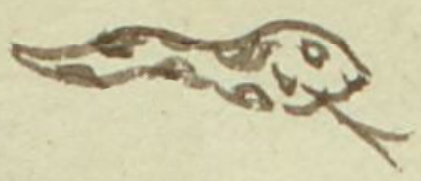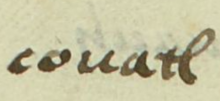Coatl (MH483v)
This simplex glyph of a snake or serpent (coatl) serves as the personal name, Coatl. It shows the full, undulating body of a spotted snake in profile, facing to the viewer's right. One eye is visible, along with a nose, and a protruding forked (or bifurcated) tongue. This is all drawn in black ink with no added colorants.
Stephanie Wood
This day sign, coatl, comes from the tonalpohualli, the 260-day divinatory calendar. Calendrics figure importantly in Nahuas' religious views of the cosmos. Men, especially, seem to have carried this name. A wooden, turquoise-mosaic pectoral in the shape of a snake is held in the British Museum, whose curators have written: "The Mexica considered serpents to be powerful, multifaceted creatures that could bridge the spheres (the underworld, water and sky) owing to their physical and mythical characteristics."
Stephanie Wood
couatl
Coatl
Stephanie Wood
1560
culebras, víboras, serpientes, cohuatl, ondulante

coa(tl), serpent or snake, https://nahuatl.wired-humanities.org/content/coatl
El Serpiente
Matrícula de Huexotzinco, folio 483v, World Digital Library, https://www.loc.gov/resource/gdcwdl.wdl_15282/?sp=46&st=image.
This manuscript is hosted by the Library of Congress and the World Digital Library; used here with the Creative Commons, “Attribution-NonCommercial-ShareAlike 3.0 License” (CC-BY-NC-SAq 3.0).





